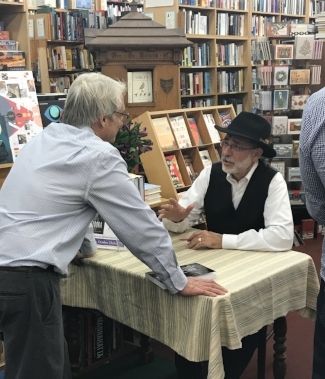Unmasked Launched; Rabbi Mysteries Unveiled; Yuko Ready to Fly
Unmasked contributors, from left, Renata Golden, editor Marcia Meier, Tania Pryputniewicz, Lisa Rizzo, and Barbara Rockman.
Marcia and Kathleen at Carr Winery.
So much has happened in the month or so since I returned from Greece, both personally and professionally. Kathleen Barry and I launched our new anthology, Unmasked, Women Write About Sex and Intimacy After Fifty, at two events in October: A reading and signing at San Diego Writers, Ink, with four of the contributors to the book, and a reading and signing at Carr Winery in Santa Barbara. We had a wonderful turnout at both, and look forward to another reading at Tecolote Books in Montecito on Wednesday, Nov. 29, at 5 p.m. Also in the works are readings in Venice at Beyond Baroque (8 p.m. January 28), and an early February performance at Center Stage Theater of "Unmasked LIVE, Women Read About Sex and Intimacy After Fifty." Stay tuned for more details.
Rabbi Arthur Gross Schaefer signs a book for a fan.
A week ago, more than 60 people came out to Chaucer's Books in Santa Barbara to celebrate the publication of Rabbi Arthur Gross Schaefer's second mystery novel, The Rabbi Wore a Fedora, and the reprinting of his first, The Rabbi Wore Moccasins.
Next Saturday, Nov. 11, at 3 p.m., Tecolote Books will help us bring out Dick Jorgensen's second memoir, Yuko, Friendship Between Nations, about his world tour as he traveled back to the States from Japan in 1957, and his subsequent work with The Asia Foundation in San Francisco, promoting improved ties between the two former World War II enemies. Come join us!
Keep all these Weeping Willow Books in mind as you make your holiday lists for the bookworms in your life!






